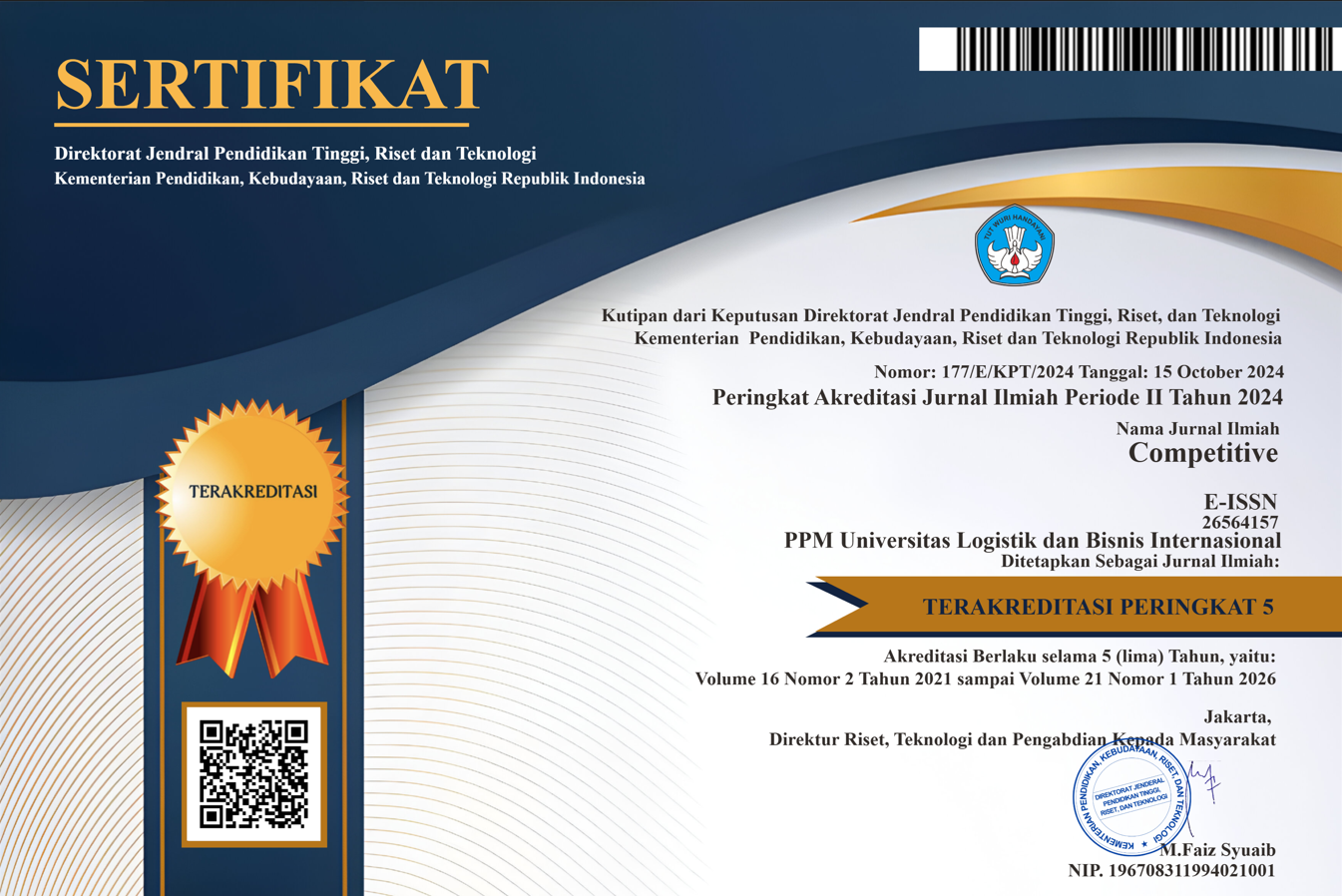Pengembangan Model Bisnis Halal Logistik Transportasi Berbasiskan Business Model Canvass (BMC)
DOI:
https://doi.org/10.36618/competitive.v15i2.917Keywords:
halal logistics, transportation, business models, value creation, key performance indicatorsAbstract
The basic concept of general logistics and halal logistics are actually the same, the difference is that halal logistics is carried out by ensuring that processes in the supply chain separate halal cargo from non-halal cargo. This needs to be done to avoid cross-contamination and ensure that as long as the logistics system of the product is guaranteed halal, therefore halal logistics can be expressed as the application of the halal concept throughout the supply chain activities of suppliers, manufacturing, warehousing, transportation and product distribution to ensure the halal status of a product. If this is done, it will produce halal logistic output according to the standards of the customer's wishes.
The research will be carried out through interviews and surveys, the results will be used to identify business processes and find out what business activities are carried out and who are the business actors involved, from the business process a business model is then created to develop ordinary logistics to halal logistics based on a Business Model. Canvass (BMC). The Business Model Canvass (BMC) consists of 9 elements, namely customer segments, value propositions, channels, customer relationships, revenue streams, key resources, key activities, key partnerships and cost structures.
The result of this research is to obtain a canvas-based halal logistics model that can be applied at PT Iron Bird, which is divided into 4 categories, namely: 1) Customers who have potential in halal logistics are industries engaged in fast moving, consumer goods, retail. , raw material and pharmacy 2) Value propositions, namely offers to customers regarding delivery that guarantees halal products, distribution to return goods or return, segregation for Less than Truck Load (LTL), re-packaging for contaminated goods, labels and documents halal, cleaning units according to standards, completeness of safety, transparency and trust, on time delivery, and costs in accordance with the services provided 3) Resources by managing main resources through a special team to handle contaminated goods, availability of vehicles, services provided , packaging for contaminated goods and labels and documents h alal 4) Financial through the services provided. Key Performance Indicators (KPI) in accordance with halal logistics standards which consist of: Quality, Time, Cost and Risk.
References
Tieman, M. and Ghazali, MC.(2013).Principles in Halal Purchasing. Journal of Islamic Marketing, Vol. 4(3): 281-293.
Jaafar,S.N, Lalp ,P.E ,Mohamed,M.(2012). Consumers Perceptition Attitudes and Purchase Intention towards Private Label Food Products in Malaysia.Asian Journal of Business and Management Sciences, Vol 2. No.8 [73-90]
Kamaruddin,Rohana, Hadijah Ibrahim,Alwi Shabudin.(2012). Willingness to Pay For Halal Logistics: The life style Choice.Procedia-Social and behaviourial Science 50(2012)722-729.
Bruil,RR. Halal logistics and the impact of consumer perceptions. Business Administration ,Master Track International Management School of Management and Governance.Master Thesis.
Bowersox, D.J, David, C.J, Cooper, M.B.2002.Supply Chain Logistic Management. New York: The McGraw-Hill Companies.
Herawati,Novita , Triana Lindriati, Ida Bagus Suryaningrat.2019. Penerapan Bisnis Model Kanvas Dalam Penentuan Rencana Manajemen Usaha Kedelai Edamame Goreng.Jurnal Agroteknologi,Vol 13 no (1)[42-51].
Osterwalder, A. & Pigneur, Y. 2015. Business Model Generation. 2015. Jakarta: PT Elex Media Komputindo.
Downloads
Published
Issue
Section
License
Copyright (c) 2021 Competitive

This work is licensed under a Creative Commons Attribution-NonCommercial-ShareAlike 4.0 International License.









